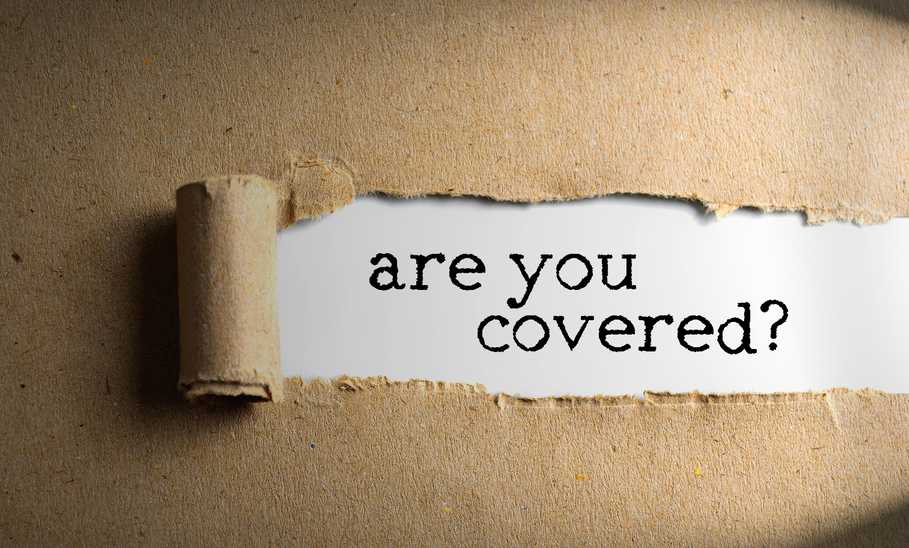Liability Insurance: Who Needs It and What Does It Cover?

Our evaluations and opinions are not influenced by our advertising relationships, but we may earn a commission from our partners’ links. This content is created by TIME Stamped, under TIME’s direction and produced in accordance with TIME’s editorial guidelines and overseen by TIME’s editorial staff. Learn more about it.
Liability coverage is available with many types of property and casualty insurance. Homeowners buy it to protect themselves financially against lawsuits from people injured on their property. Businesses buy it in case they’re held responsible for injuries, property damage, or other losses.
Liability is also part of a car insurance policy. In fact, it's required by law in nearly every state. If you’re at fault in an accident that injures others or damages their vehicles (or other property), liability coverage ensures that your insurance company will help pay for their medical and repair bills.
Car insurance liability coverage protects everybody on the road.
A car insurance policy typically consists of multiple coverages. Some are required by law, while some are required by your lender if you have a loan or lease. Others are optional. Each coverage applies in a specific situation. If certain conditions are met, your insurance company will pay you or another party.
That takes us to understanding the situations when liability applies.
There are actually two types of liability coverage: bodily injury (BI) liability coverage and property damage (PD) liability coverage.
As you can see, liability coverage focuses on expenses incurred by the victims of an accident for which you’re responsible. It does not cover your own medical bills or vehicle repair/replacement costs.
However, you can add other coverages to your policy—such as personal injury protection (available in some states), medical payments, or collision—to ensure you’ll receive reimbursement for these expenses.
Both BI and PD liability coverage are subject to limits. In insurance, a limit is the maximum amount of money an insurer will pay for a claim. Note that state laws require drivers to have minimum limits for their BI and PD liability coverages. These minimum limits vary by state.
You choose limits when you buy your policy. Choosing higher limits means your insurance company will pay more for a claim, but this will make the policy cost more. Choosing lower limits will result in a cheaper policy.
But here’s the catch: If the costs associated with a claim exceed your limit, you'll be personally responsible for paying the difference. Therefore, you’ll want to choose your limits carefully—something we'll cover later in this article.
Liability limits are often expressed with three numbers separated by slashes, such as 25/50/25 or 100/300/100. These are referred to as split limits.
The first two numbers are the BI limits, while the third represents the PD limit. All numbers are multiplied by $1,000.
For example, split limits of 100/300/100 means the insurer will pay up to:
Liability limits can also be expressed as a combined single limit (CSL). As the term implies, this is a single limit for all the BI and PD expenses associated with a claim.
A 500 CSL, for example, means your insurance company would pay up to $500,000 for all the medical and repair costs associated with an accident.
According to the National Association of Insurance Commissioners, the average national cost of liability coverage (BI and PD combined) was $631 in 2020, the most recent figure available. This varies by state: North Dakota’s average for 2020 was the lowest at $304, while Louisiana’s $979 average was the highest.
The cost of liability coverage also varies by individual. Factors such as your age, where you live, the type of car you drive, and your driving record can affect what you pay. As explained above, choosing a higher limit will increase the cost of your coverage.
You can drive legally if your policy includes liability coverage with your state's minimum required limits.
But there are excellent reasons to choose limits higher than the minimum. Remember that if you’re responsible for an accident and the total cost of your liability exceeds your coverage limits, you’re still responsible for reimbursing the other involved parties. That means you’d have to pay the difference out of your own pocket. If you’re sued, a court could require you to pay through garnished wages and personal savings.
So, when deciding on your liability limits, consider your assets. The more you have tied up in savings and retirement accounts, home equity, and other investments, the higher liability limits you may need. You should also think about your likelihood of causing an accident. If you have a poor driving record, have a long commute, or routinely drive in heavy traffic, you might want to consider higher limits.
If you think you need higher limits than your car insurance policy’s maximum option (usually CSL 500), you may want to consider umbrella insurance. A separate policy, umbrella insurance adds a layer of liability coverage that kicks in when the payout on a claim surpasses your car insurance policy’s BI and PD limits. An umbrella might offer limits of up to $5 million or more.
Currently, two states don’t require liability coverage for a car insurance policy (though it is available and recommended in those states). If you choose to forego the coverage in these states, you're still financially responsible for any accidents you cause. That means you'll pay for others' medical or repair bills out of pocket.
Drivers in Virginia can opt out of liability by paying an annual $500 uninsured motor vehicle fee. However, this option will sunset in July 2024, as a new state law will require all Virginia drivers to carry liability coverage.
New Hampshire does not require drivers to have liability insurance. However, drivers must be able to prove to the state that they have sufficient funds to meet the state's financial responsibility requirements in an accident.
All major car insurance providers sell liability, including well-known companies such as Liberty Mutual, State Farm, GEICO, and Progressive.
You might also consider contacting an independent insurance agent about your car insurance liability coverage needs. Independent agents are licensed professionals who can evaluate your insurance needs and recommend liability limits that are right for you. And because they represent multiple companies, they can comparison-shop on your behalf to ensure you get the right coverage at a price that works for your budget.
A "full coverage" policy typically consists of BI and PD liability, plus comprehensive and collision coverages. Comprehensive and collision provide financial protection in case your own car is damaged or stolen.
Many drivers choose to keep comprehensive and collision even when those coverages are optional. But if you have an older car and believe you could pay to repair or replace it out of pocket, you could drop those coverages and choose to drive with only BI and PD liability.
Liability coverage is essential for anyone who drives, and it’s required by law in nearly every state. It ensures you and the drivers you share the road with are financially responsible for injuries and property damage in case of an accident.
In most cases, whatever liability coverage you have on your personal policy will extend to a rental car. But check with your insurance company or agent to make sure.
If you don’t have car insurance (because you don’t own a car and need to rent a car, you do have options. Rental companies are required to provide state-minimum liability coverage as part of the rental agreement, so you should have some coverage. For higher limits, many rental car companies offer supplemental liability coverage.
Finally, remember that liability insurance only covers you for damage you do to others. Any damage you cause to the rental car would be covered by your policy’s collision or comprehensive coverage, or by the optional loss damage waivers (LDW) offered by the rental company.
Liability insurance is part of a car insurance policy. In fact, liability insurance forms the core of a policy. If you're responsible for causing an accident, it ensures you can pay for others' medical or car repair bills.
Driving without liability coverage is like playing with fire. It's illegal, and you'd be taking a big risk.
If you’re involved in an accident or simply pulled over for a routine traffic stop, you could face penalties such as a suspended license and registration. If you’re uninsured and cause an accident, you’d still be legally responsible for any property damage and injuries you cause. You’d have to pay those expenses out of your own pocket.
Professional liability is a form of business insurance for service providers such as doctors, attorneys, architects, or accountants. It provides financial protection to these professionals if they're sued for negligence.
The information presented here is created by TIME Stamped and overseen by TIME editorial staff. To learn more, see our About Us page.



